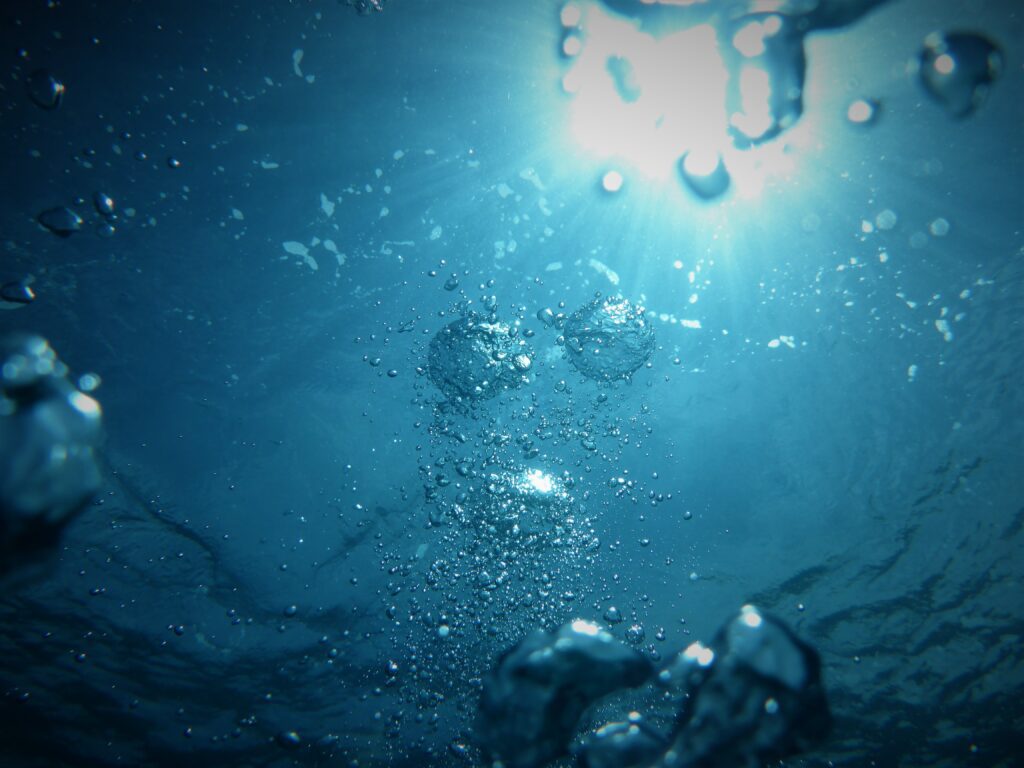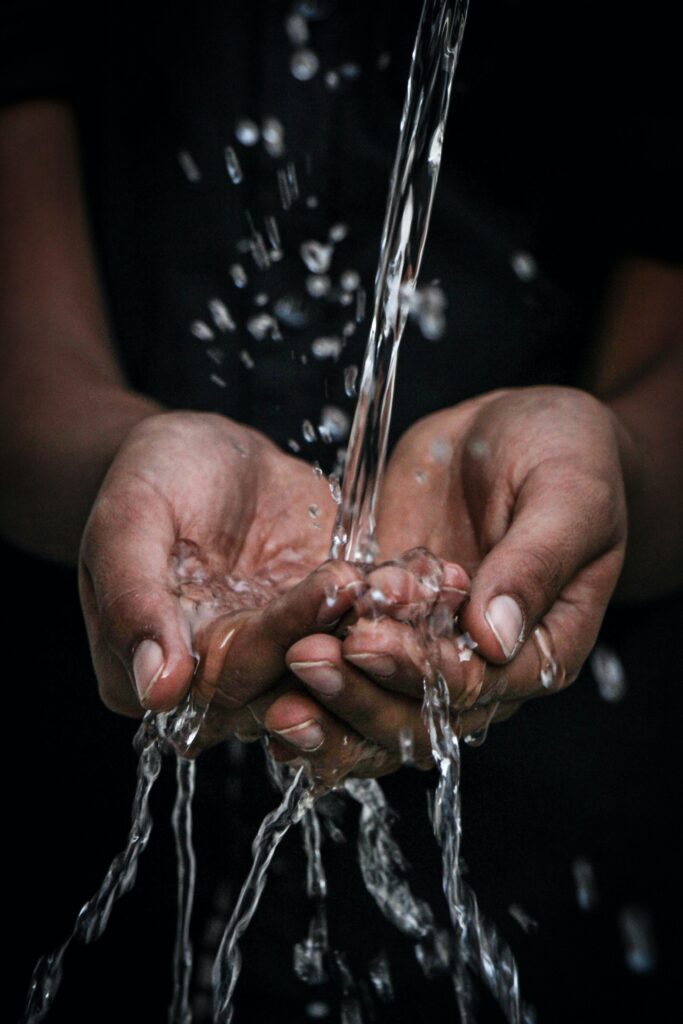In our article, we explore the fascinating journey that potable water takes, from its source to the moment it flows out of our taps. We delve into the intricate processes that ensure water is safe for consumption, tracing its path from natural sources and through advanced treatment systems. From rivers and lakes to filtration plants and disinfection methods, we uncover the vital steps that allow us to enjoy clean and refreshing water every day. So, pour yourself a glass and join us on a captivating journey through the world of potable water.



This image is property of images.unsplash.com.
Understanding Potable Water
Potable water refers to water that is safe and suitable for human consumption. It is an essential resource for our daily lives and plays a vital role in maintaining our overall health and well-being. In order to fully comprehend the importance of potable water, it is necessary to understand its definition, the characteristics it possesses, and why it is so crucial in our daily lives.
Definition of Potable Water
Potable water is water that meets specific standards and regulations for drinking and cooking purposes. It is free from any harmful substances or contaminants that could pose a risk to human health. Potable water should be clear, odorless, and tasteless, giving us confidence that it is safe to consume.
Importance of Potable Water
The importance of potable water cannot be overstated. It is an essential resource for our survival and well-being. Without access to clean and safe water, our lives would be drastically affected. Potable water is crucial for maintaining hydration, promoting proper digestion, and facilitating various bodily functions. Additionally, it is vital for cooking, sanitation, and maintaining overall cleanliness.
Characteristics of Potable Water
Potable water possesses several key characteristics that distinguish it from other types of water sources. Firstly, it is free from any harmful contaminants such as bacteria, viruses, and parasites. Secondly, it should have a balanced pH level to ensure compatibility with our bodies. Thirdly, potable water typically has a pleasant taste and odor, making it more palatable for consumption. Lastly, it must meet certain clarity standards, meaning it should be clear and free from any visible particles or sediments.
Different Sources of Potable Water
Potable water can be obtained from various sources, each with its own unique characteristics and accessibility.
Groundwater
Groundwater refers to water that is stored beneath the Earth’s surface. It is obtained by drilling wells into the aquifers, which are underground layers of rock or sediment that hold water. Groundwater is often considered a reliable source of potable water as it is naturally filtered by the layers of soil and rock, making it less susceptible to contamination.
Surface Water
Surface water includes water bodies such as rivers, lakes, and reservoirs. It is obtained by diverting or capturing water from these sources. While surface water can be an abundant and accessible source of potable water, it is more prone to contamination from various pollutants, including industrial waste, agricultural runoff, and sewage.
Rainwater
Rainwater is another source of potable water that can be collected and stored for later use. Rainfall can be harvested from rooftops or specially designed collection systems. Rainwater is generally considered safe for consumption, but it may require additional treatment to remove any potential contaminants.
Desalinated Water
Desalinated water is obtained by removing the salt and other minerals from seawater or brackish water. This process, known as desalination, can be achieved through multiple methods such as reverse osmosis or distillation. Desalinated water is an important source of potable water, especially in regions where freshwater resources are scarce. However, the desalination process can be energy-intensive and costly.
Recycled Water
Recycled water, also known as reclaimed or reused water, is obtained by treating wastewater and making it suitable for various non-potable uses such as irrigation, industrial processes, and toilet flushing. While recycled water is not typically used for drinking purposes, advancements in treatment processes have made it possible to produce high-quality recycled water that can be used indirectly for potable purposes.



This image is property of images.unsplash.com.
How Potable Water is Extracted
In order to obtain potable water from its various sources, different extraction methods are employed.
Well Drilling
Well drilling involves the process of drilling deep into the ground to access groundwater reserves. Once the well is drilled, a pump is installed to extract the water from the aquifer. The water is then transported to a treatment facility where it undergoes various processes to make it potable.
River Intakes
For surface water sources such as rivers, a common method of extraction is through river intakes. Water is diverted from the river into a system of pipes that transport it to a treatment facility. This method requires careful monitoring and consideration to ensure that the water being extracted is of suitable quality.
Catching Rainwater
Rainwater can be collected by setting up rainwater harvesting systems. These systems typically involve the use of gutters and downpipes to collect rainwater from rooftops, which is then directed to storage tanks or reservoirs. The collected rainwater can then be treated and made potable for consumption.
Sea Water Desalination
Desalination plants utilize various processes such as reverse osmosis or distillation to convert seawater or brackish water into potable water. These plants extract the salt and other impurities, leaving behind freshwater for consumption. Sea water desalination is particularly important in coastal regions where seawater is abundant, but freshwater resources are limited.
Waste Water Recycling
Wastewater recycling involves treating wastewater using advanced treatment processes to remove contaminants and produce high-quality reclaimed water. This reclaimed water can be used for various non-potable purposes such as irrigation, industrial processes, and groundwater recharge. In some cases, the reclaimed water undergoes further treatment to make it suitable for indirect potable use.
Processes Involved in Water Treatment
Water treatment processes are employed to remove contaminants and make water safe and potable for consumption.
Coagulation and Flocculation
The first step in the water treatment process is coagulation and flocculation. Coagulants are added to the water to destabilize the suspended particles and form small clumps called flocs. Flocculants are then added to help these flocs come together and settle down, making it easier to remove them later in the process.
Sedimentation
After coagulation and flocculation, the water enters the sedimentation stage. In this step, the water is allowed to rest in large basins, allowing the flocs to settle down to the bottom of the basin. This process helps in the removal of larger particles and sediments from the water.
Filtration
Filtration is another crucial step in water treatment. The water passes through specialized filters, composed of layers of sand, gravel, and activated carbon. These filters help in removing smaller particles, as well as certain chemicals and impurities that may still be present in the water.
Disinfection
Disinfection is carried out to destroy or inactivate any remaining harmful microorganisms such as bacteria, viruses, and parasites that may be present in the water. Common disinfection methods include the use of chlorine, ozone, or ultraviolet (UV) light. This step ensures that the water is free from any potential pathogens.
pH Adjustment
pH adjustment is often necessary to ensure that the water is neither too acidic nor too alkaline. This step helps maintain the water’s pH in the optimal range, ensuring compatibility with our bodies and preventing any potential adverse health effects.



This image is property of images.unsplash.com.
Testing and Monitoring Water Quality
Regular testing and monitoring of water quality are essential to ensure that potable water meets the required standards and regulations.
Frequent Water Sampling
Water sampling involves collecting representative samples from various points in the water distribution system. These samples are then analyzed for physical, chemical, and biological parameters to assess the water quality and detect any potential issues.
Determining Physical and Chemical Parameters
Physical and chemical parameters such as pH, turbidity, dissolved oxygen, chlorine levels, and the presence of various metals and organic compounds are determined through laboratory analysis. These parameters help determine whether the water meets the required standards for human consumption.
Detection of Bacteria and Parasites
Microbiological testing is crucial for detecting the presence of harmful bacteria and parasites in the water. This testing is typically carried out through the detection of coliform bacteria, E.coli, and other indicators of waterborne illnesses.
Standards and Guidelines for Potable Water
Several organizations and regulatory bodies have established guidelines and standards to ensure the quality of potable water.
World Health Organization (WHO) Guidelines
The World Health Organization (WHO) has developed guidelines for drinking water quality, providing a framework for assessing and managing the risks associated with waterborne diseases. These guidelines take into account various factors such as microbiological, chemical, and radiological contaminants.
EPA Drinking Water Standards
The Environmental Protection Agency (EPA) in the United States has established the Drinking Water Standards, also known as Maximum Contaminant Levels (MCLs). These standards set limits for various chemicals and microorganisms present in drinking water to protect public health.
Local Regulations and Standards
In addition to global and national guidelines, many countries have their own local regulations and standards for potable water. These regulations address specific regional concerns and may include additional parameters and requirements.
Water Distribution System
Once water has been treated and deemed potable, it is distributed to consumers through a vast network of pipes and infrastructure.
Water Storage
Water storage plays a vital role in ensuring a reliable supply of potable water. Storage tanks and reservoirs are used to store treated water before it is distributed to consumers. These storage facilities help maintain a consistent supply, especially during periods of high demand or interruptions in the treatment process.
Water Distribution Network
The water distribution network consists of pipes, valves, and pumps that transport potable water from the treatment facility to consumers’ homes, businesses, and public facilities. This complex network ensures that every consumer has access to clean and safe water at all times.
Maintenance of Pipes and Infrastructure
Regular maintenance of the water distribution system is essential to prevent leaks, reduce losses, and ensure the quality of the water being delivered. Inspections, repairs, and upgrades are carried out on pipes and infrastructure to maintain the integrity and efficiency of the system.
How Home Plumbing Affects Water Quality
While potable water is treated and delivered to our homes, the quality of water can be influenced by the home plumbing system.
Corrosion in Pipes
Corrosion in pipes can lead to the deterioration of the pipe material, resulting in the release of contaminants into the water. Corroded pipes can introduce metals such as lead, copper, or iron into the water supply, posing health risks.
Leaching of Harmful Chemicals
Certain plumbing materials, such as older lead pipes or fittings, can leach harmful chemicals into the water supply. This can occur when water comes into contact with these materials, leading to the contamination of the potable water.
Effects of Temperature and Pressure
Fluctuations in temperature and pressure within the plumbing system can impact the quality of the water. High temperatures can promote the growth of bacteria, while excessive pressure can lead to pipe damage and leaks.
Methods to Purify Tap Water at Home
To further enhance the quality of tap water, there are various methods available for home purification.
Boiling
Boiling water is a simple and effective method to kill most microorganisms present. By bringing the water to a rolling boil for at least one minute, the majority of harmful bacteria, viruses, and parasites can be eliminated.
Use of Water Filters
Water filters, such as activated carbon filters or reverse osmosis systems, are designed to remove impurities and improve the taste and odor of tap water. These filters can effectively remove particles, chemicals, and certain contaminants, ensuring cleaner and safer drinking water.
Distillation
Distillation involves heating the water to create steam and then condensing the steam back into liquid form. This process effectively removes impurities, chemicals, and microorganisms, providing purified water.
UV Light Treatment
Ultraviolet (UV) light treatment is an increasingly popular method for home water purification. UV light destroys or inactivates microorganisms by disrupting their DNA, making them unable to reproduce. UV light treatment is a chemical-free process that effectively inactivates bacteria, viruses, and parasites.
Chemical Purification
Chemical purification methods involve the use of disinfectants such as chlorine or iodine to kill or inactivate microorganisms present in the water. While effective, these methods should be used with caution and in accordance with the manufacturer’s instructions.
Future Concerns and Innovations in Potable Water
As the demand for potable water continues to rise, there are several concerns and ongoing innovations in the field.
Technological Advancements
Advancements in water treatment technologies are continuously being made to improve the efficiency, effectiveness, and sustainability of the treatment processes. From enhanced filtration systems to innovative disinfection methods, these advancements aim to ensure the availability of clean and safe potable water for future generations.
Sustainable Water Management
The concept of sustainable water management focuses on using water resources in a way that meets our current needs without compromising the ability of future generations to meet their own needs. This includes strategies such as water conservation, rainwater harvesting, and wastewater reuse.
Climate Adaptation
With the growing impacts of climate change, there is a need for adaptation measures to ensure the resilience of potable water systems. This may include building infrastructure that is more resistant to extreme weather events, implementing water management strategies to cope with changing rainfall patterns, and investing in technologies that can optimize water use.
Public-Private Partnerships
The collaboration between public and private entities is crucial for addressing the challenges of potable water supply. Public-private partnerships can bring together the expertise, resources, and innovation necessary to develop and implement sustainable solutions for water treatment, distribution systems, and water management.
In conclusion, understanding potable water is essential for our daily lives. From knowing its definition and characteristics to the different sources and extraction methods, every aspect of potable water plays a significant role in ensuring our health and well-being. With proper treatment, monitoring, and distribution systems, potable water can continue to be a safe and reliable resource. As we look towards the future, it is crucial to address concerns, embrace innovations, and promote sustainable water management to secure a consistent supply of potable water for generations to come.
